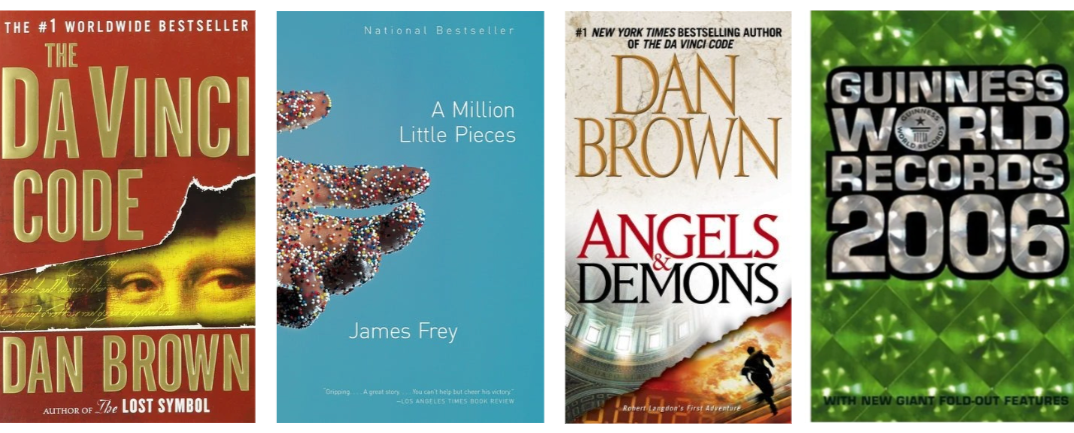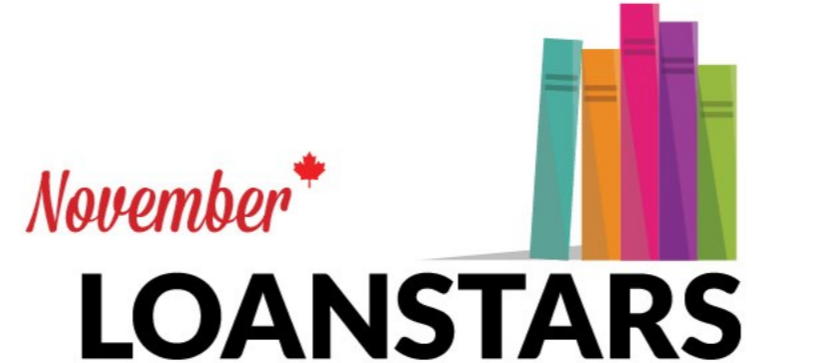We here at BookNet are aware of a book’s lifecycle, at least from the pre-publication announcement through publication date and onto life after life as the book goes out of print in its original edition. We pay attention and build products that rely on the communication of each stage of this cycle — from idea to reader, and after.
The importance of Publishing Status and Product Availability
A publisher’s data is critical. Once an ISBN, and its associated book metadata, has been distributed through an ONIX feed or manually entered into a form for any data aggregator, either by you or a third party data provider, and has been sold to retailers, libraries, and wholesalers, your ISBN and the book it represents has a life that is followed with interest by the Canadian book supply chain.
However, not every book makes it to publication for many reasons. It can be cancelled or postponed indefinitely. Or a book may have been published and removed from sale after it has been available to consumers. It doesn’t happen often, but it certainly can and does. An example is the recall of children’s books that come with toys or act as a toy, like many rag or bath books these days.
The good news is that ONIX has you covered.
Publishing Status in codelist 64 has 17 codes that will accurately communicate to your partners the status of the title in question. The list includes but is not limited to:
| Code | Heading | Notes |
|---|---|---|
| 01 | Cancelled | The product was announced, and subsequently abandoned; the < PublicationDate > element in ONIX 2.1 or its equivalent in < PublishingDate > in ONIX 3.0 must not be sent |
| 03 | Postponed indefinitely | The product was announced, and subsequently postponed with no expected publication date; the < PublicationDate > element in ONIX 2.1, or its equivalent as a < PublishingDate > composite in ONIX 3.0, must not be sent |
| 07 | Out of print | The product was active, but is now permanently inactive in the sense that (a) the publisher will not accept orders for it, though stock may still be available elsewhere in the supply chain, and (b) the product will not be made available again under the same ISBN. Code 07 normally implies that the publisher will not accept returns beyond a specified date |
| 11 | Withdrawn from sale | Withdrawn, typically for legal reasons or to avoid giving offence |
| 15 | Recalled | Recalled for reasons of consumer safety |
And if you’re ever unsure about what code to use, EDItEUR’s usage notes can be accessed by clicking on the star on the right side of each heading.
A happy hand-holding friend of Publishing Status is found in codelist 65 Product Availability, a list that is weighted to physical books and is specifically designed to provide product availability information about the book from the supplier with reference to the publishing status. It has codes that “agree” with codelist 64 — or in some cases allow the distributor to acknowledge they don’t know what’s up with an ISBN. Some of the codes included are:
| Code | Heading | Notes |
|---|---|---|
| 09 | Not yet available, postponed indefinitely | Not yet available from the supplier, and the publisher indicates that it has been postponed indefinitely. Should be used in preference to code 10 where the publisher has indicated that a previously-announced publication date is no longer correct, and no new date has yet been announced. No expected availability date should be included in < SupplyDate>. For use in ONIX 3.0 only |
| 34 | Temporarily withdrawn from sale | May be for quality or technical reasons. Requires expected availability date, either as < ExpectedShipDate > (ONIX 2.1) or as < SupplyDate > with < SupplyDateRole > coded ‘08’ (ONIX 3.0), except in exceptional circumstances where no date is known |
| 46 | Withdrawn from sale | May be for legal reasons or to avoid giving offence |
| 52 | Not available, publisher no longer sells product in this market | This product is unavailable from the supplier in this market, no successor product or alternative format is available or planned. Use this code when a publisher has indicated the product is permanently unavailable (in this market) while remaining available elsewhere |
| 98 | No recent update received | Sender has not received any recent update for this product from the publisher/supplier (for use when the sender is a data aggregator): the definition of ‘recent’ must be specified by the aggregator, or by agreement between parties to an exchange |
Of course, your Distributor is the first place to start when communicating with your business partners about your ISBN's publishing status.
There’s a process for how to handle titles at the end of their lifecycle, whether natural or abruptly interrupted, this process has been part of the stock and trade of the print book market for decades. In the print market, titles may be withdrawn from sale for giving offence or it may simply go out of print organically. The ONIX standard accounts for that, but even prior to ONIX, communications to retailers and libraries and others in the trade was a standard practice.
And then there’s ebooks. The reinvention of the book not only changed paper to pixels, it also changed the publishing industry standards that made the ISBN a useful identifier and the communications standards and best practices that were immutable when the industry was dealing solely with print. Some of these changes were based on a new reality. When an ebook goes out of print, there’s no afterlife. There’s no trade in used ebooks. There’s only available and no longer available. And ONIX accounts for that as well with code 17 “Permanently withdrawn from sale”, a useful code specifically for digital products. That is to say, there’s no source file that can be obtained and retailers no longer have the right to continue downloading or providing for download the copy of the file provided for this ISBN.
With the move from print to digital — a paradigm shift if ever there was one — the attitude of the print market has gradually, “anec-datally,” also shifted somewhat. Having found an ability to use absolutes on a licensed product they want to apply it to their printed stock. We've seen a minor trend toward subtraction where records are actually removed from history. Remind you of anything?
In this photo from the book The Commissar Vanishes by David King, Nikolai Yezhov is removed from this famous photo with Stalin, erased. Photo credit: F. Kislov / Tate.
Happily, total removal of all data is the exception in the book world, not the rule, thanks to Publishing Status code list 64 and Product Availability code list 65. A book’s metadata is part of its historical record and that a book has existed is actually important. So is the ability to link to information about products after they’re no longer available. Licensed ebooks can exist in consumer media storage after the source file is permanently withdrawn from sale. Library and archive licenses are different. Physical books last as long as their paper. And data aggregations — like BiblioShare — preserve information about otherwise dead products, because the supply chain maintains sales histories and libraries preserve cultural history, record removal isn’t a great option. Publishing status on a dead record is the final formal statement on it.
The exception: How do you communicate the removal of a record
Let’s talk about when the worst thing happens: the book or its author is publicly shamed and the material in it gives offence and everyone is in agreement the book should be removed.
As well as reaching out to retailers and other trading partners personally to explain that the book’s stock should be removed from store and warehouse floors, you must also send the information via ONIX and communicate with the data aggregators who have your data. Permanently withdrawn and/or Withdrawn from sale statuses should go out in your feed and requests to have images — cover, interior, author, back cover, and assets like reading guides, samples, excerpts, and the like may also be on the list for removal.
For Biblioshare and Webform, as well as CataList, just reach out to those products and request the removal of these files. Ideally, you’re leaving the record in place with its new and important message about the withdrawal of the item from the market.
For SalesData and LibraryData, please contact Bowker/Proquest’s Books In Print team at bip.bowkerlink@bowker.com. As long as you’re the publisher, they’ll consider the request.
The rule: Keep your data fresh
Mmmm-mm! Fresh data! It's deliciously informative and no matter whether you publish 200 titles or two titles in a season, take the opportunity to make sure the status of your backlist is up to date and correct. We see that sometimes people neglect to update their forthcoming books to active in a season, so please remember that your book data is a living organism that needs care and feeding, like that sourdough starter you grew back in March.
Once a book is out of print, your work is done. Other statuses may need to be communicated, but the natural order of things is complete. It’s the way it’s meant to be, replaced by a newer edition, or a more cheaply produced edition, or simply naturally and organically complete, like Never Let Me Go by Kazuo Ishiguro. (As in, why is my awesome book out of print.)
How long do you communicate normal end of life statuses
When a book comes to the end of its relationship with you, no matter what that relationship is, our general recommendation is that you should continue to communicate the changed status of a book over the next few ONIX feeds, preferably one or two delta files and at six months in your full-all-record files so that everyone has a chance to receive and ingest the new information. Then it’s safe to remove the record from your active ONIX feed.
Psst, I have this old ISBN…
Say you had this really old book, long out of print, and there’s this perfectly good ISBN sitting around doing nothing. It’s tempting to give it some life with a new book, isn't it? You may be tempted, but here's a clear message to everyone who owns ISBNs:
Never, ever, in any circumstances repurpose an ISBN from an old book onto a new work.
When you do that you really are obliterating that old book from history. No cover, no record, just a book in hand that doesn’t line up with any found record on the Internet for the ISBN which is confusing and bad practice.
Data aggregators are sooo good at ingesting data these days that you can barely find a trace of that old title. Except for maybe a stray author who never wrote poetry, but was a children’s book illustrator or a format that makes no sense, like this novel surely isn’t a board book?!
The supply chain will thank you for your data protection and vigilance.



















The latest news out of the European Commission.